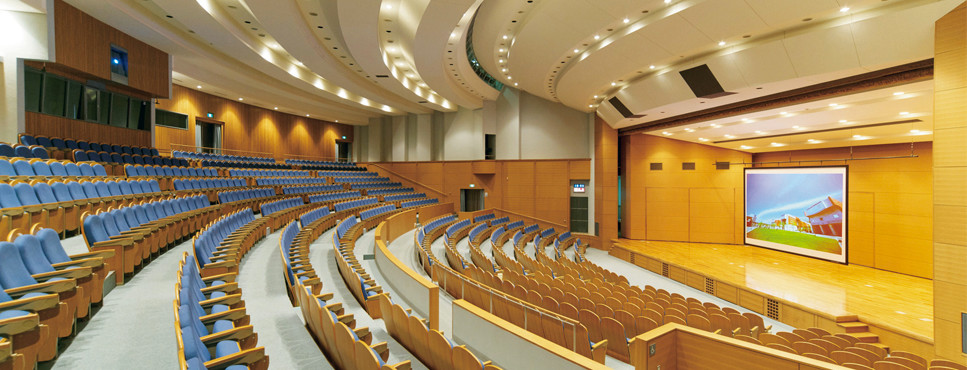AV Control System
In today’s fast-paced world, technology plays a crucial role in simplifying our lives. From smartphones to smart homes, the advancements in automation have revolutionized the way we live and work. One such technological innovation is the AV control system.
An AV control system is a centralized platform that allows users to manage and control various audiovisual devices from a single interface. This technology simplifies the process of controlling audio and visual equipment, such as televisions, projectors, speakers, and video conferencing systems. The user-friendly interface allows for easy access to device settings from one central hub. Additionally, many AV control systems offer advanced features, such as the ability to adjust volume levels, switch between sources, and control lighting.
AV CONTROL SYSTEM COMPONENTS
- CONTROL PROCESSOR
- VIDEO SWITCHER
- AUDIO PROCESSOR
- USER INTERFACE
- AMPLIFIERS
- NETWORK CONNECTIVITY
- DISPLAY CONTROLLERS
AV CONTROL SYSTEM APPLICATIONS AND USE CASES
Conference ROOMS
AV control systems are commonly used in conference rooms to manage audio and video equipment. With a control system, users can easily switch between different sources, adjust volume levels, and control other AV functions, all from a central interface. This simplifies the process of setting up and managing presentations, video conferences, and other collaborative activities in the conference room.
CLASSROOMS
In educational settings, AV control systems play a crucial role in enhancing the learning experience. Teachers can use the control system to easily switch between different media sources, such as projectors, interactive whiteboards, and audio systems. This allows for seamless integration of multimedia content during lessons, making it more engaging and interactive for students.

AUDITORIUMS AND THEATERS
AV control systems are essential in auditoriums and theaters to manage complex audio and visual setups. From controlling stage lighting and sound effects to managing multiple screens and projectors, a control system ensures a smooth and synchronized production. It allows operators to have complete control over all the AV elements, creating a seamless experience for the audience.
HOSPITALITY VENUES
Hotels, restaurants, and event venues often utilize AV control systems to enhance the guest experience. These systems can be used to control background music, lighting, and video displays, creating the desired ambiance for different occasions. With a user-friendly interface, staff members can easily operate the AV equipment, ensuring a seamless and enjoyable experience for guests.
DIGITAL SIGNAGE
AV control systems are widely used in digital signage applications. Whether it’s a large video wall in a shopping mall or a smaller display in a retail store, a control system allows for easy content management and scheduling. Users can remotely update and control the content displayed, ensuring relevant and timely information reaches the intended audience.
COMMAND AND CONTROL CENTERS
In command and control centers, such as those used by emergency services or transportation authorities, AV control systems are crucial for monitoring and managing multiple displays and audio feeds. Operators can easily switch between different sources, zoom in on specific areas, and control audio levels, enabling effective decision-making and response coordination.
SPORTS ARENAS AND STADIUMS
AV control systems are used in sports arenas and stadiums to deliver immersive audio and visual experiences to spectators. From controlling large LED screens and scoreboards to managing sound systems, a control system ensures that fans can enjoy the game to the fullest. It also allows for real-time updates, instant replays, and interactive elements, enhancing the overall spectator experience.
An AV control system is a technology that allows for the centralized control and management of audiovisual equipment and systems. It enables users to seamlessly operate and coordinate various components such as displays, projectors, audio systems, lighting, and other AV devices from a single interface. This system simplifies the process of controlling and integrating multiple AV elements, enhancing user experience and efficiency in various settings such as conference rooms, event spaces, and entertainment venues.
For more information on this article please feel free to contact us
av control systems/vendors in delhi/ncr/crestron/audio video for office/conference room
Innovate
Benefits of AV Control System for Your Business
01
Easy Integration
With an AV control system, you can seamlessly integrate different audiovisual equipment and simplify the management of your technology infrastructure.
02
Time-saving
An AV control system can save you time by automating the process of setting up audiovisual equipment and improving workflow efficiency.
03
Enhanced UX
A centralized platform allows your team to easily control and manage the AV equipment. This translates to a better experience for you and your clients during presentations, meetings, and conferences.




